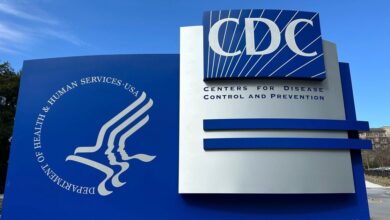Second Patient Death After Gene Therapy: Implications For The Future

Gene therapy is a groundbreaking field of medicine that holds the promise of treating genetic disorders at their root cause. However, recent events have highlighted the potential dangers associated with this cutting-edge technology. Sarepta Therapeutics, a leader in the gene therapy space, recently announced the tragic deaths of two patients following treatment with their gene therapy, Elevidys, for Duchenne muscular dystrophy. These fatalities have raised serious concerns about the safety of adeno-associated virus-based gene therapies and have prompted a reevaluation of the risks and benefits associated with these treatments.
The deaths of these two patients have underscored the need for more stringent safety measures and careful patient selection when it comes to gene therapy. While adeno-associated virus vectors are widely used in gene therapy due to their efficiency and relatively low risk profile, high-dose administration can trigger severe immune-mediated toxicities, particularly affecting the liver. The tragic death of Jesse Gelsinger in 1999 following adenoviral gene therapy served as a stark reminder of the potential risks associated with gene therapy and led to increased regulation and scrutiny in the field.
Recent studies have highlighted the importance of considering age and disease status when evaluating a patient’s response to adeno-associated virus-based gene therapy. Factors such as underlying infections, pre-existing liver disease, and genetic predispositions can significantly impact the risks associated with these treatments. Additionally, research has shown that older patients, particularly females, may be more susceptible to severe inflammatory responses to gene therapy. Patient health status, disease progression, and therapy type all play a crucial role in determining the potential risks and benefits of gene therapy.
In response to these safety concerns, Sarepta is exploring mitigation strategies, such as the use of immunosuppressants like sirolimus to reduce immune-mediated liver damage. However, the use of these drugs comes with its own set of risks and must be carefully evaluated before widespread adoption. Non-viral delivery methods, such as lipid nanoparticles, are also emerging as a promising alternative to viral vectors, offering a potentially safer and more effective way to deliver gene therapy.
The recent tragedies in the gene therapy field serve as a sobering reminder of the delicate balance between hope and caution in the pursuit of innovative treatments. As the field stands at a crossroads, it is essential to approach gene therapy with a blend of scientific rigor, caution, and compassion for the patients who stand to benefit from these groundbreaking treatments. By learning from past experiences, carefully evaluating new strategies, and prioritizing patient safety, we can navigate the complexities of gene therapy and pave the way for a future where genetic disorders can be effectively treated at their source.
For a more in-depth exploration of these issues and the latest advancements in gene therapy, consider checking out “Destiny’s Child No Longer: Rewriting Genetic Fate,” a comprehensive guide that delves into the complexities of gene therapy and its potential impact on the future of medicine.



